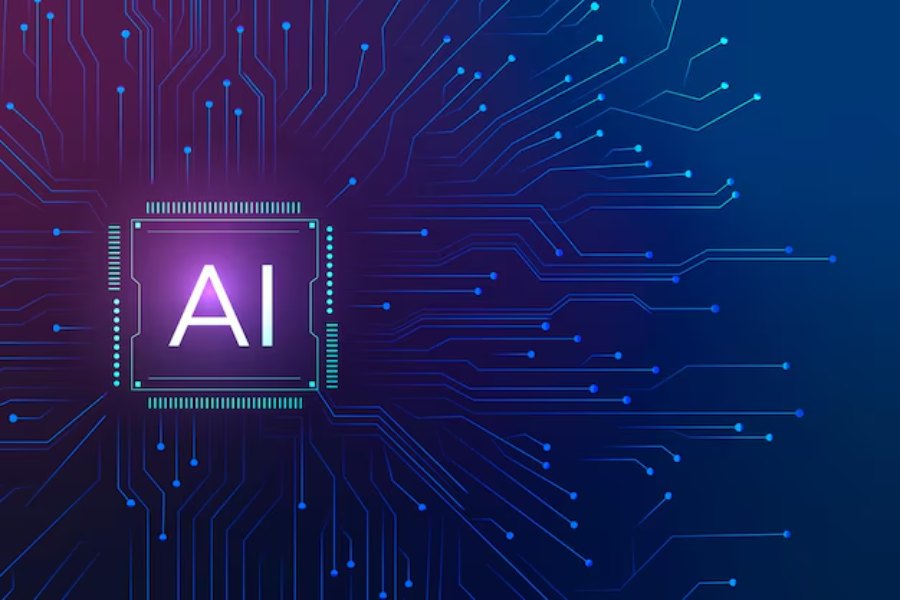Artificial intelligence (AI) and machine learning (ML) are rapidly transforming industries, making them essential skills in today’s tech-driven world. Whether you’re a tech enthusiast, data scientist, or someone curious about the future, understanding how to learn AI and ML can open doors to countless opportunities. These fields involve complex algorithms, data analysis, and pattern recognition, allowing machines to perform tasks autonomously and intelligently.
In this article, we will break down the most effective ways to learn AI and ML step-by-step, making the journey easier to navigate. From foundational knowledge to advanced techniques, we’ll guide you through every phase of learning AI and ML. Whether you’re starting from scratch or looking to enhance your existing knowledge, mastering AI and ML requires dedication, the right resources, and a strategic approach.
So, how do you start? What are the best practices to follow? What resources should you focus on? This guide answers these questions while providing a detailed roadmap to ensure you’re well-equipped to learn AI and ML efficiently.
The Foundations of Learning AI and ML
Before diving deep into AI and ML, it’s important to understand the fundamental concepts that form the backbone of these technologies. Whether you’re a beginner or have some knowledge, grasping the basic principles will provide a solid foundation for further learning.
One of the first things to focus on is math. Both AI and ML heavily rely on mathematical concepts, especially in areas like linear algebra, calculus, statistics, and probability. Linear algebra is particularly crucial for understanding how machine learning algorithms work. Calculus helps in optimizing algorithms, and probability theory is fundamental for working with uncertainties in AI models.
Programming is another core component of learning AI and ML. Python is the most widely used programming language for AI development due to its simplicity and the availability of powerful libraries like TensorFlow, Keras, and Scikit-learn. If you’re just starting, learning Python is a great first step. Understanding how to work with data structures, algorithms, and object-oriented programming in Python will prepare you for building AI and ML models.
Additionally, grasping the core concepts of machine learning, such as supervised learning, unsupervised learning, and reinforcement learning, will pave the way for more advanced topics. Each type of learning solves different types of problems, and understanding when to use each is key to your AI journey.
Key Steps in Learning AI and ML
H3: Step 1 – Build a Strong Mathematical Foundation
To learn AI and ML effectively, start by strengthening your mathematical skills. Linear algebra, calculus, and probability form the basis for understanding how AI and ML algorithms work. Online courses, textbooks, and tutorials can help you master these areas.
H3: Step 2 – Learn Programming (Python and R)
Python is the go-to language for AI and ML, but R is also commonly used in data science. Learn the basics of Python, focusing on libraries like NumPy, Pandas, and TensorFlow. These will help you manage data and create ML models.
H3: Step 3 – Study Core AI and ML Concepts
Understanding key AI and ML concepts is crucial. Study topics like neural networks, decision trees, and regression models. Explore supervised and unsupervised learning, as they are the foundation for building AI systems.
H3: Step 4 – Practice with Projects and Data Sets
Theory is important, but hands-on practice solidifies learning. Platforms like Kaggle offer datasets and competitions that can help you apply your knowledge in real-world scenarios. Try building your models and improving their performance.
H3: Step 5 – Take Advanced Courses and Specializations
Once you have a grasp of the basics, take advanced courses on AI and ML. Online platforms like Coursera and edX offer specialized tracks that delve into deep learning, computer vision, and natural language processing.
Resources to Learn AI and ML
Learning AI and ML requires the right resources. Here are some tools and platforms that can help:
- Coursera: Offers in-depth courses from top universities on AI, ML, and data science.
- edX: Provides a variety of AI and ML courses, often in collaboration with institutions like MIT.
- Kaggle: A platform for machine learning competitions with free datasets to practice on.
- Fast.ai: An excellent resource for deep learning tutorials and courses, especially for beginners.
- YouTube Channels: Channels like “3Blue1Brown” and “Sentdex” provide valuable tutorials and insights into AI and ML concepts.
Best Practices for Learning AI and ML
Learning AI and ML requires a strategic approach. Here are some best practices to ensure success:
- Start with the Basics: Build a solid understanding of mathematics and programming before moving to advanced topics.
- Practice Regularly: Learning AI and ML requires continuous practice. Spend time working on projects, tweaking algorithms, and experimenting with models.
- Focus on Real-World Applications: The best way to learn is by solving real-world problems. Engage with practical projects that involve real datasets to understand how AI and ML are applied in industries.
- Join Communities: Engage in forums like Reddit’s AI and ML communities, Stack Overflow, and Kaggle discussion boards. Being part of a community will help you stay motivated and keep up with the latest developments.
- Stay Updated: AI and ML are rapidly evolving fields. Keep yourself updated by following research papers, attending webinars, and subscribing to AI-focused newsletters.
Common Challenges in Learning AI and ML
H3: Challenge 1 – Understanding Complex Algorithms
One of the most common challenges in learning AI and ML is grasping complex algorithms like neural networks, convolutional networks, and reinforcement learning. It can be overwhelming initially, but breaking them down into simpler components can help.
H3: Challenge 2 – Managing Large Data Sets
Working with large datasets is another challenge many learners face. You’ll need to develop skills in data preprocessing, cleaning, and manipulation to ensure that your models are accurate and efficient.
H3: Challenge 3 – Keeping Up with Rapid Advancements
AI and ML are fields that constantly evolve. It’s challenging to keep up with the latest advancements, frameworks, and research. Dedicate time to staying current with industry trends.
H3: Challenge 4 – Debugging Models
Machine learning models can be difficult to debug. Understanding the nuances of optimization and loss functions is crucial to identifying and fixing issues in your code.
Conclusion
Mastering how to learn AI and ML requires dedication, continuous learning, and practical experience. By building a strong foundation in mathematics and programming, and utilizing the right resources, you can gradually build expertise in this field. As AI and ML continue to shape the future, your ability to work with these technologies will become increasingly valuable. Stay patient, keep practicing, and continue to explore real-world applications. With the right mindset and tools, you can successfully navigate the learning path to becoming proficient in AI and ML.
FAQ’s
Q. How long does it take to learn AI and ML?
A. The time it takes to learn AI and ML depends on your background. It can take anywhere from six months to several years to become proficient, depending on your commitment and prior knowledge.
Q. Do I need a strong math background to learn AI and ML?
A. Yes, a strong foundation in mathematics, particularly in linear algebra, calculus, and statistics, is crucial for understanding AI and ML algorithms.
Q. What is the best programming language for AI and ML?
A. Python is the most widely used language for AI and ML due to its simplicity and vast ecosystem of libraries like TensorFlow and PyTorch.
Q. Are online courses effective for learning AI and ML?
A. Yes, platforms like Coursera, edX, and Fast.ai offer comprehensive AI and ML courses that are highly effective for self-paced learning.
Q. How can I practice AI and ML?
A. The best way to practice is by working on projects and participating in machine learning competitions on platforms like Kaggle, where you can apply your skills to real-world data sets.












































Leave a Reply